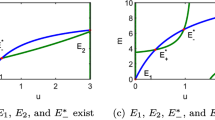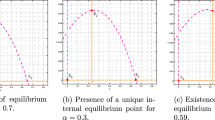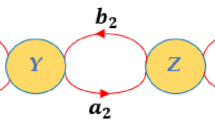Abstract.
We present a complete parametric analysis of stability properties and dynamic regimes of an ODE model in which the functional response is a function of the ratio of prey and predator abundances. We show the existence of eight qualitatively different types of system behaviors realized for various parameter values. In particular, there exist areas of coexistence (which may be steady or oscillating), areas in which both populations become extinct, and areas of “conditional coexistence” depending on the initial values. One of the main mathematical features of ratio-dependent models, distinguishing this class from other predator–prey models, is that the Origin is a complicated equilibrium point, whose characteristics crucially determine the main properties of the model. This is the first demonstration of this phenomenon in an ecological model. The model is investigated with methods of the qualitative theory of ODEs and the theory of bifurcations. The biological relevance of the mathematical results is discussed both regarding conservation issues (for which coexistence is desired) and biological control (for which extinction is desired).
Similar content being viewed by others
Author information
Authors and Affiliations
Additional information
Received: 24 December 1999 / Revised version: 27 October 2000 /¶Published online: 21 August 2001
Rights and permissions
About this article
Cite this article
Berezovskaya, F., Karev, G. & Arditi, R. Parametric analysis of the ratio-dependent predator–prey model. J Math Biol 43, 221–246 (2001). https://doi.org/10.1007/s002850000078
Issue Date:
DOI: https://doi.org/10.1007/s002850000078




